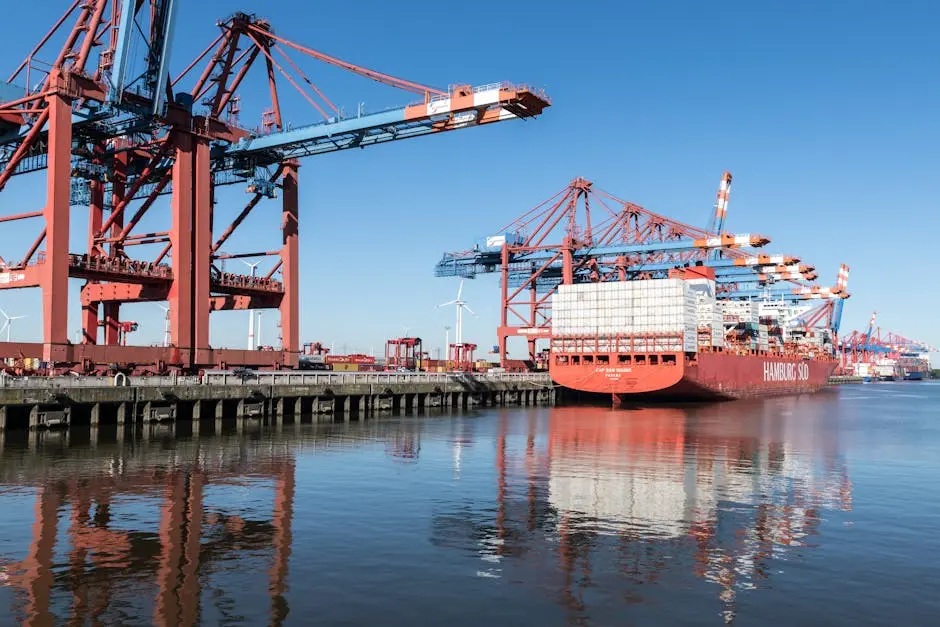10 Innovative Ways to Improve Container Unloading Processes
In today's fast-paced world, improving container unloading processes is essential for businesses looking to streamline operations and enhance efficiency. This listicle explores innovative techniques that make container unloading smoother, faster, and more effective, ensuring your supply chain keeps moving without a hitch.
1. Embrace Advanced Automation
Automation technologies can drastically reduce manual labor and speed up container unloading. Explore robotic arms and automated guided vehicles to enhance efficiency. Among the most notable advancements are the use of automated conveyor systems and robotics, which have revolutionized the way businesses handle high-volume operations. These tools significantly reduce human error and increase the speed of the unloading process. Moreover, implementing automation can also lead to better data collection and monitoring, allowing businesses to optimize unloading processes continuously. Automating the devanning process minimizes the risk of damage during unloading, ensuring goods remain intact and ready for distribution.
Another key advantage of automation is the reduction in labor costs. By shifting the bulk of manual work to machines, companies can allocate human resources to more strategic tasks that require higher levels of decision-making and critical thinking. As Doug Pohl highlights, effective devanning using automation can be a game-changer for supply chain efficiency. The data collected from these automated systems also allow for predictive maintenance, keeping equipment in optimal working condition and preemptively addressing potential breakdowns.
2. Optimize Layout and Space
Reorganizing the unloading area can lead to smoother processes. Ensure optimal layout for minimal handling and quick transit. Effective layout planning involves strategic positioning of unloading stations, ensuring there is enough space for forklifts and other equipment to maneuver efficiently. By doing so, businesses can reduce bottlenecks and genuinely optimize the overall flow. As discussed here, a well-structured layout is often complemented by the use of modern storage solutions that enhance accessibility and reduce handling times.
Another vital aspect is the integration of digital mapping tools, which help visualize various spatial configurations. Businesses can simulate container unloading scenarios to predict potential inefficiencies and address them proactively. This layout-centric approach can also lead to improved safety, as clearly marked pathways reduce the risk of accidents during unloading activities. By prioritizing safety and efficiency through space optimization, companies can significantly improve their container unloading processes.
3. Implement Real-Time Tracking Systems
Real-time tracking provides crucial data, allowing for better planning and quick response to potential issues during unloading. These systems allow businesses to monitor the progress of unloading activities as they happen, ensuring that any delays or problems are addressed instantly. For instance, integrating GPS technology with RFID tags can offer insights not only on the whereabouts of goods but also on their condition and status within the unloading phase. This methodology underpins a proactive strategy where extracted data aids in tweaking processes before they pose significant operational hurdles.
Moreover, real-time tracking fosters seamless communication between teams involved in container unloading processes. This synergy ensures that everyone has access to the same up-to-date information flow, enabling quick adjustments and decisions that enhance overall efficiency. Such systems can be incredibly beneficial when coordinating across several unloading dockyards or even spanning multiple geographical locations, a common scenario in today's global supply chains.
4. Incorporate IoT Technology
Leverage IoT devices to monitor container conditions, ensuring safety and efficiency in the unloading process. These devices can track a range of variables, from temperature and humidity inside the containers to real-time location tracking, providing actionable data points for optimizing unloading. By employing IoT, businesses can significantly reduce the possibility of spoilage or damage, which can happen due to uncontrolled environmental conditions. The insights garnered can be early indicators of necessary interventions, consequently preventing potential loss or delays in the logistics chain.
Moreover, IoT technology can also support predictive maintenance for equipment used in unloading operations. For example, an IoT-enhanced forklift might relay real-time performance metrics back to a centralized hub where any anomalies can trigger maintenance schedules, reducing unexpected downtimes. This approach aligns well with teams that prioritize sustainable practices, offering an added advantage of resource conservation and operational integrity.
5. Enhance Personnel Training
Regular training for personnel in using new technologies and methodologies can lead to more efficient operations and fewer errors. As the container unloading landscape modernizes, it's vital that employees remain adept at utilizing cutting-edge tools and methodologies. Comprehensive training programs can empower staff to make the most of automation and digital solutions, significantly reducing the incidence of costly errors and improving operational fluidity. Training initiatives must include hands-on sessions, theoretical learning, and practical implementations to drive enhanced productivity.
Continued education on safety protocols is a crucial component as it underscores the investment in the safety and well-being of personnel engaged in unloading operations. When employees are well-versed with updated safety measures, the possibility of accidents diminishes dramatically, and the efficiency of container unloading operations increases correspondingly. Ultimately, a well-trained workforce not only elevates operational excellence but also bolsters morale, resulting in a more engaged and committed team.
6. Utilize Data Analytics
Analyzing past unloading data can reveal patterns and areas for improvement, helping to refine processes over time. Through data analytics, companies can streamline their logistics operations. For example, algorithms can identify peak times for unloading and suggest scheduling changes to optimize resource allocation. This feature supports agile business objectives by re-aligning operational triggers based on data-backed findings, promoting efficiency throughout the supply chain. Businesses may discover new pathways to savings and enhanced service levels by continuously refining protocols and practices.
By adopting data-driven concepts, organizations place themselves at the nexus of innovation and practicality. Comprehensive analytics empower executives with the insights needed to make responsive decisions swiftly, reducing potential friction within the container devanning process. Furthermore, customer satisfaction levels as a result of these enhanced practices often enjoy a noticeable uptick, as stakeholders perceive faster, more reliable services aligning with their logistics requirements.
7. Adopt Augmented Reality Solutions
Augmented reality can aid in training and provide real-time assistance, guiding personnel through complex unloading tasks. Imagine an operator wearing smart glasses that overlaid important unloading instructions and safety protocols as containers arrive. These augmented reality solutions serve as on-the-spot mentors, providing immediate context and guidance, thus reducing potential errors. Employers can tailor these tools to address specific challenges or highlight customized strategies needed for varied cargo types encountered during container unloading.
8. Streamline Communication
Implementing effective communication tools can ensure that everyone in the unloading process is aligned and informed. Intra-fleet communication apps can offer instantaneous updates and metrics, enabling workers to voice concerns or share important operational insights seamlessly. These apps serve not just as communication conduits but all-purpose management tools capable of synchronizing schedules, allocating resources, and providing real-time feedback on each phase of unloading.
Streamlined communication serves as an essential pillar to keep remote teams connected, especially as they navigate complex multinational supply chains. Harnessing modern communication platforms ensures that expectations remain transparent, responsibilities are clear, and the overall operation remains resilient under diverse business conditions, such as those overseen by logistical experts.
9. Schedule Regular Equipment Maintenance
Unplanned downtimes can stall unloading; regular maintenance ensures that equipment is always in top working condition. Adopt a proactive maintenance schedule that does not await machinery breakdowns; instead, it anticipates them. This approach translates to fewer operational interruptions and longer equipment lifespans while contributing substantially to the efficiency of container devanning operations. Including devices in preventive maintenance regimes also reduces the strain on human resources when dealing with mechanical failures.
10. Focus on Sustainability
Adopting green practices can not only improve efficiency but also reduce the environmental impact of unloading processes. Companies are now under increasing pressure to minimize carbon footprints, and the unloading process presents numerous opportunities to achieve this. Rather than reverting to traditional energy-intensive methods, businesses can implement eco-friendly strategies such as leveraging energy-efficient equipment or developing routes to minimize fuel consumption, improving sustainability and reputation.
Approaching sustainability holistically emphasizes the positives associated with eco-conscious management. Resource sharing, reduced waste generation, and energy savings accrue financial and environmental benefits, nurturing a cycle of continuous improvement. In this regard, the advantages extend beyond just environmental impact—they envelop service excellence and client satisfaction, promoting enduring relationship with logistics stakeholders. Companies like Alameda Distribution Inc. are fast implementing such initiatives, setting benchmarks for industry-wide sustainability.

